Full text
PDF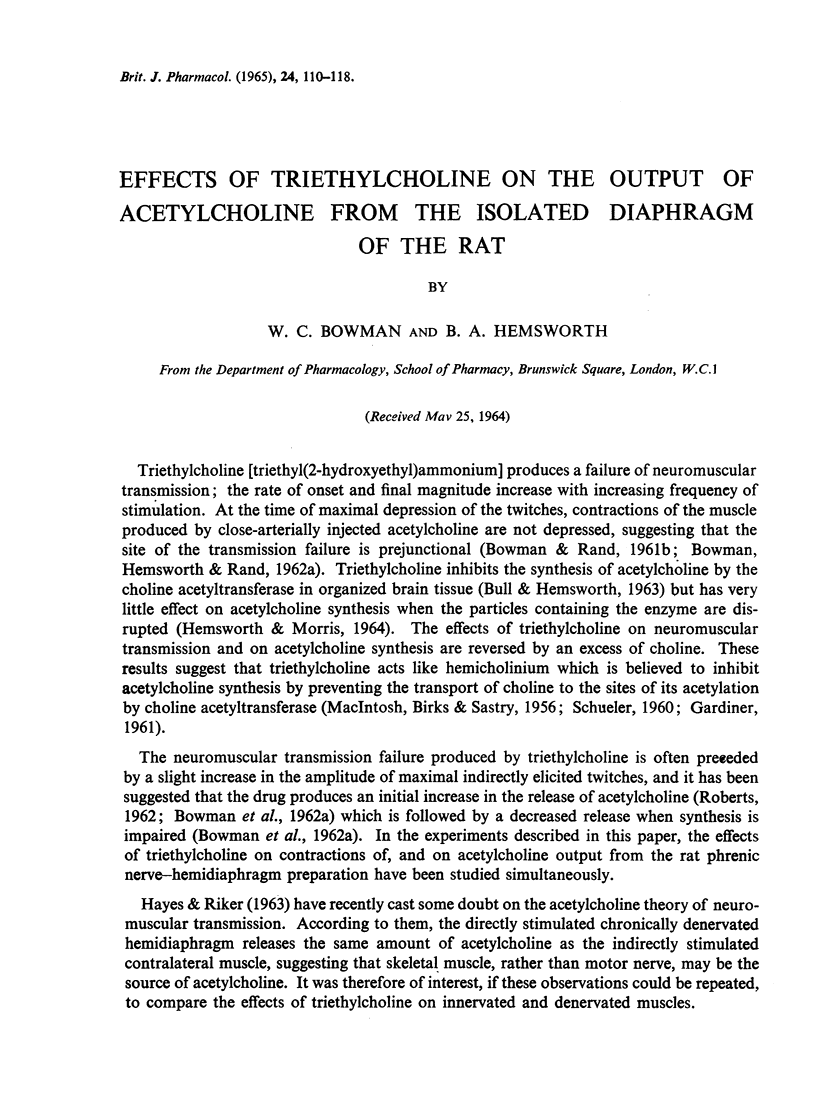
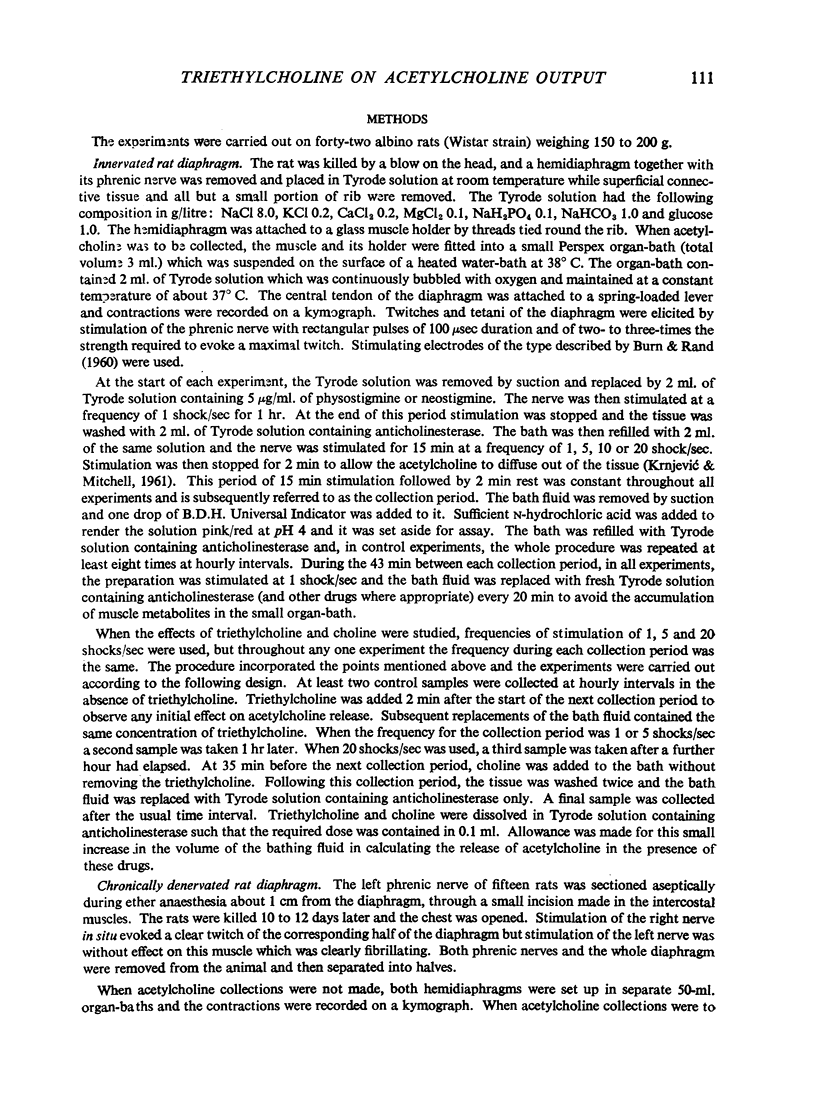
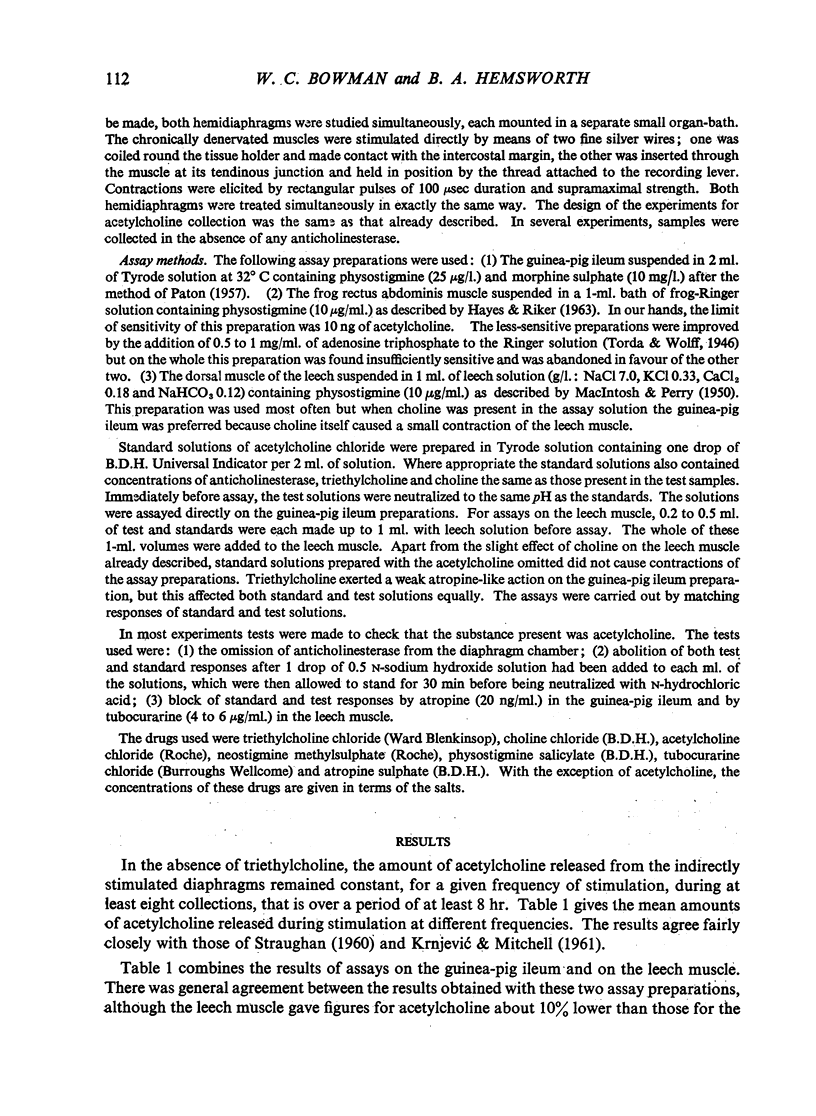
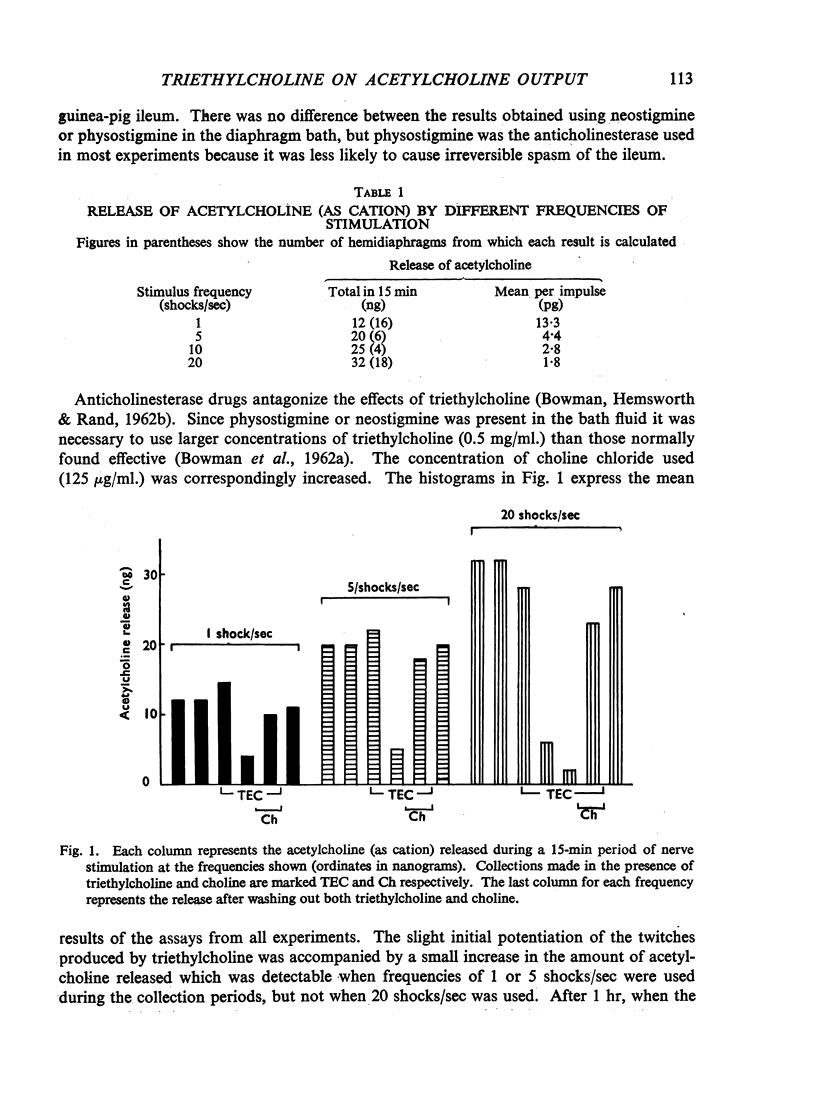
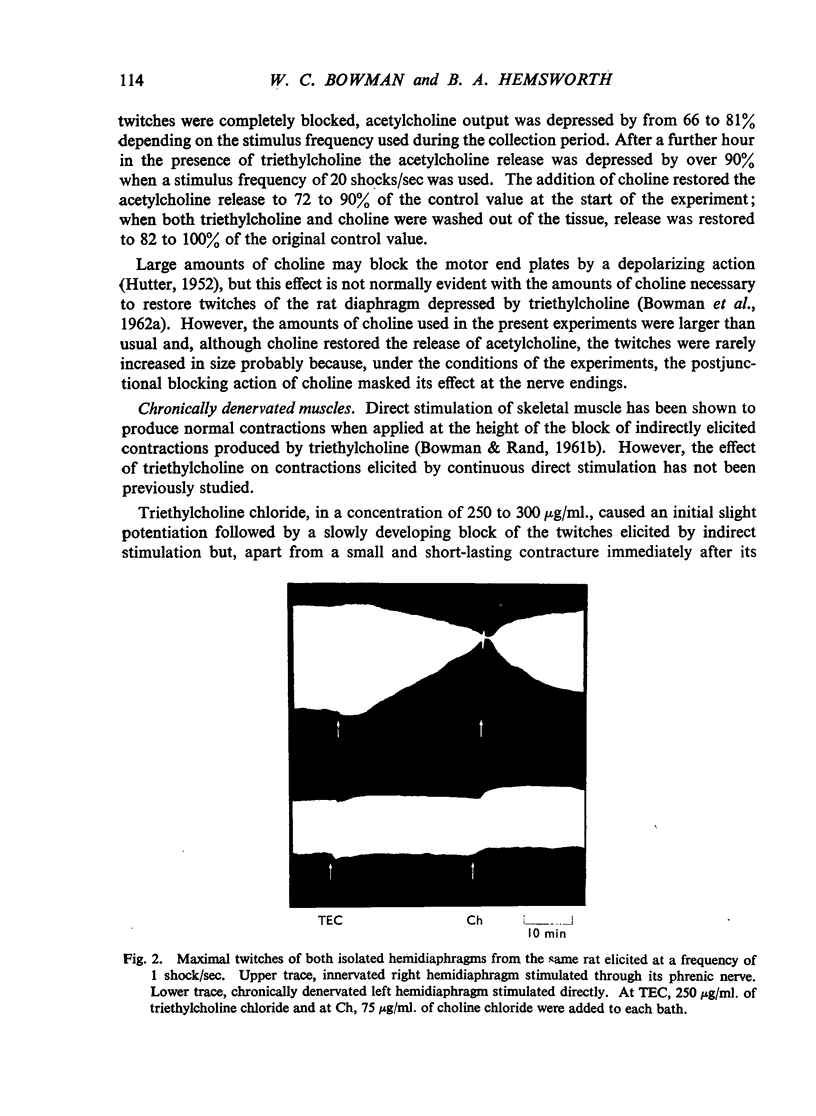
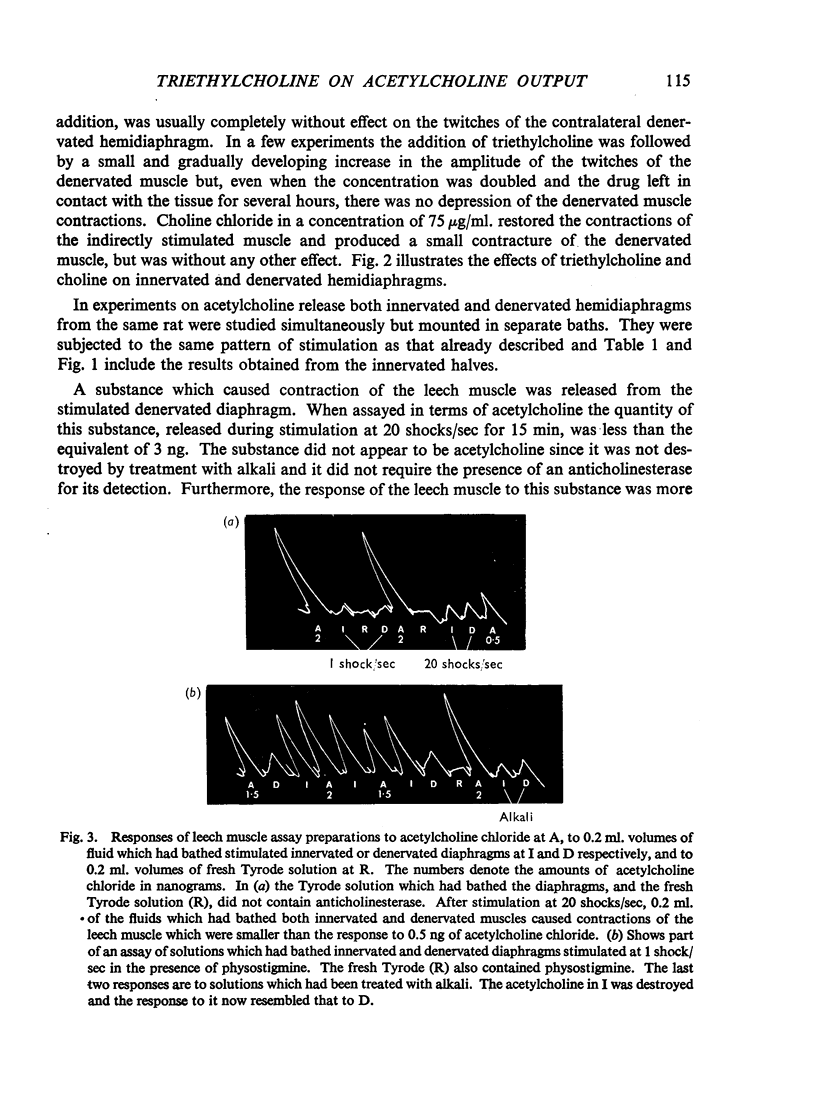
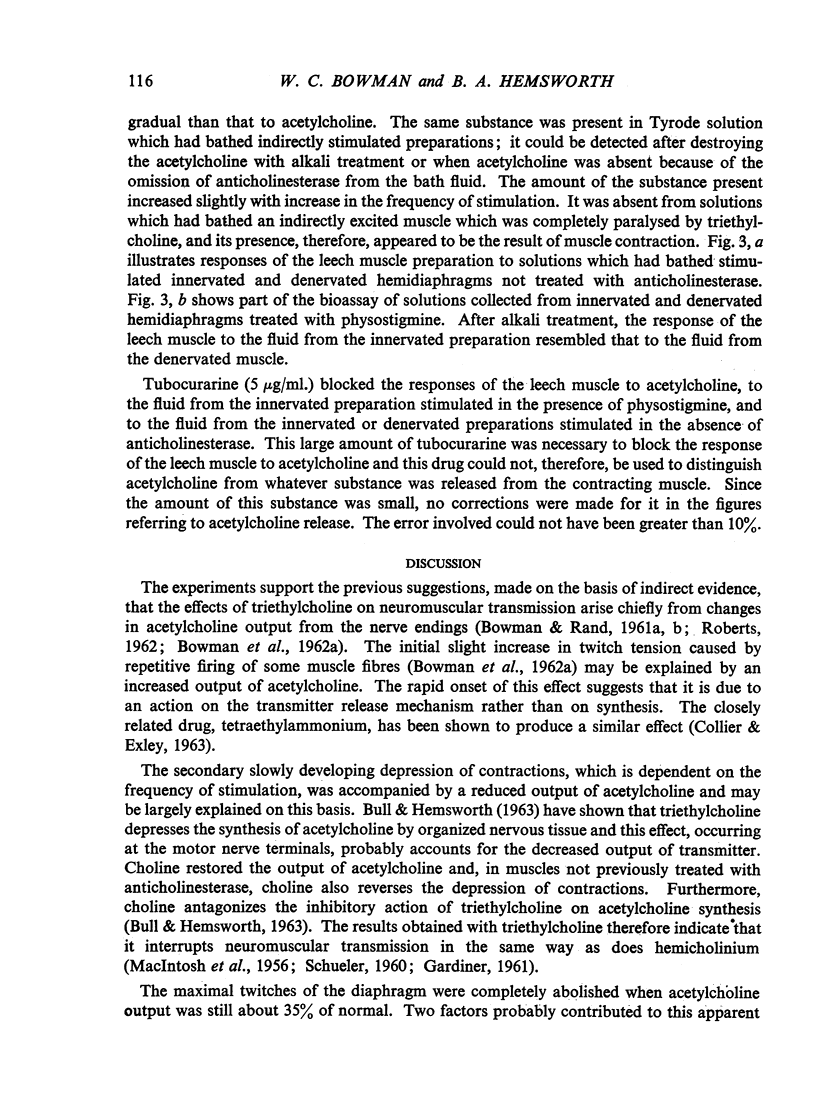
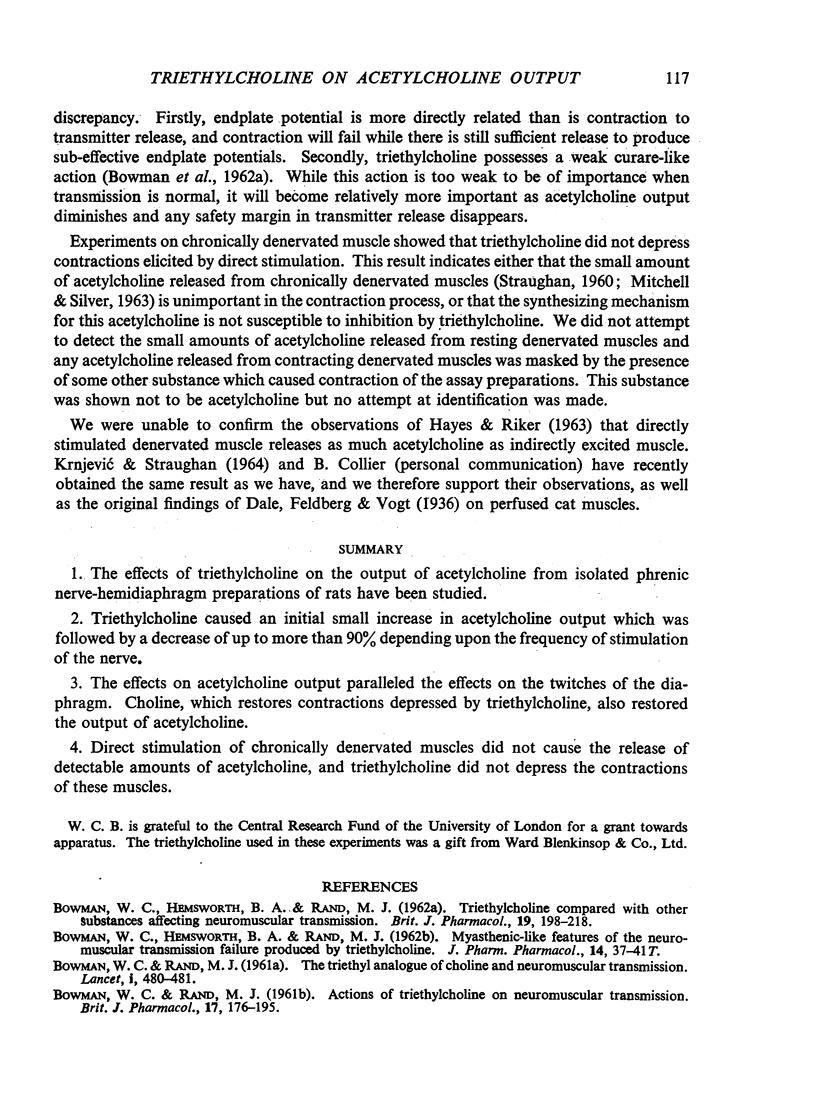
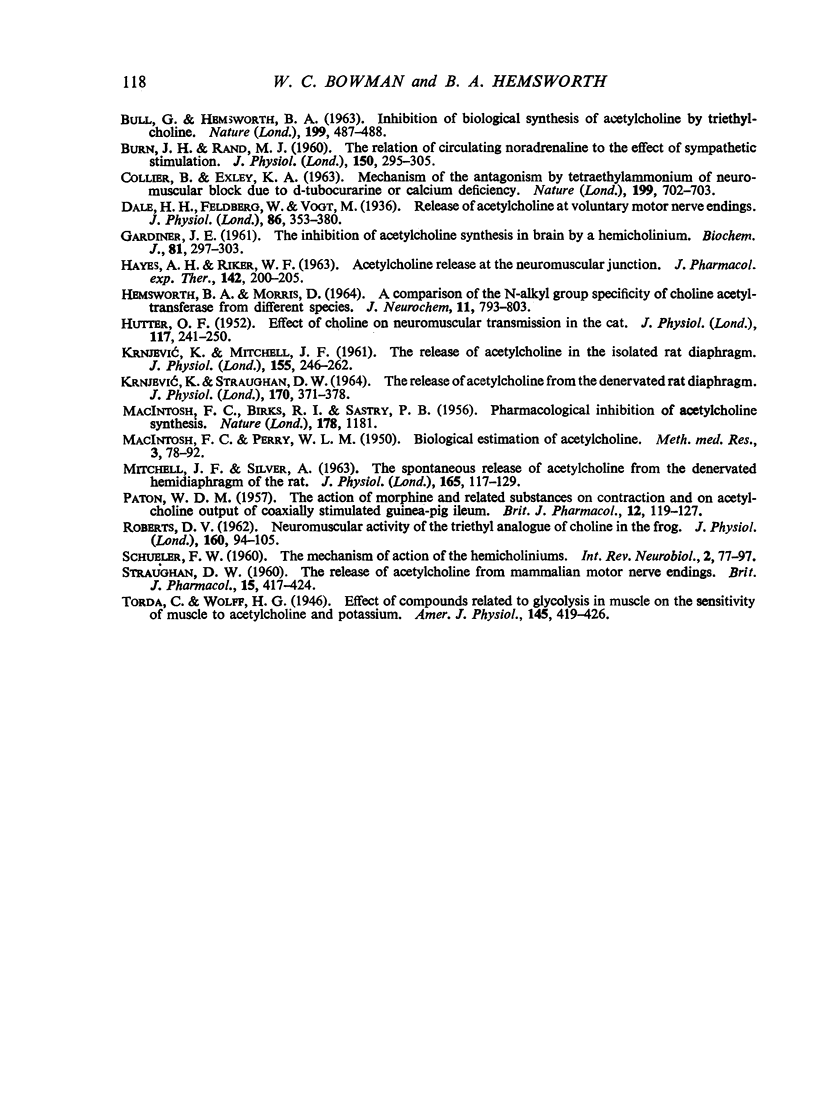
Selected References
These references are in PubMed. This may not be the complete list of references from this article.
- BIRKS R. I., MACINTOSH F. C., SASTRY P. B. Pharmacological inhibition of acetylcholine synthesis. Nature. 1956 Nov 24;178(4543):1181–1181. doi: 10.1038/1781181a0. [DOI] [PubMed] [Google Scholar]
- BOWMAN W. C., HEMSWORTH B. A., RAND M. J. Triethylcholine compared with other substances affecting neuromuscular transmission. Br J Pharmacol Chemother. 1962 Aug;19:198–218. doi: 10.1111/j.1476-5381.1962.tb01440.x. [DOI] [PMC free article] [PubMed] [Google Scholar]
- BOWMAN W. C., RAND M. J. Actions of triethylcholine on neuromuscular transmission. Br J Pharmacol Chemother. 1961 Oct;17:176–195. doi: 10.1111/j.1476-5381.1961.tb01278.x. [DOI] [PMC free article] [PubMed] [Google Scholar]
- BULL G., HEMSWORTH B. A. INHIBITION OF BIOLOGICAL SYNTHESIS OF ACETYLCHOLINE BY TRIETHYLCHOLINE. Nature. 1963 Aug 3;199:487–488. doi: 10.1038/199487b0. [DOI] [PubMed] [Google Scholar]
- BURN J. H., RAND M. J. The relation of circulating noradrenaline to the effect of sympathetic stimulation. J Physiol. 1960 Feb;150:295–305. doi: 10.1113/jphysiol.1960.sp006388. [DOI] [PMC free article] [PubMed] [Google Scholar]
- COLLIER B., EXLEY K. A. MECHANISM OF THE ANTAGONISM BY TETRAETHYLAMMONIUM OF NEUROMUSCULAR BLOCK DUE TO D-TUBOCURARINE OR CALCIUM DEFICIENCY. Nature. 1963 Aug 17;199:702–703. doi: 10.1038/199702a0. [DOI] [PubMed] [Google Scholar]
- Dale H. H., Feldberg W., Vogt M. Release of acetylcholine at voluntary motor nerve endings. J Physiol. 1936 May 4;86(4):353–380. doi: 10.1113/jphysiol.1936.sp003371. [DOI] [PMC free article] [PubMed] [Google Scholar]
- GARDINER J. E. The inhibition of acetylcholine synthesis in brain by a hemicholinium. Biochem J. 1961 Nov;81:297–303. doi: 10.1042/bj0810297. [DOI] [PMC free article] [PubMed] [Google Scholar]
- HAYES A. H., Jr, RIKER W. F., Jr ACETYLCHOLINE RELEASE AT THE NEUROMUSCULAR JUNCTION. J Pharmacol Exp Ther. 1963 Nov;142:200–205. [PubMed] [Google Scholar]
- HEMSWORTH B. A., MORRIS D. A COMPARISON OF THE N-ALKYL GROUP SPECIFICITY OF CHOLINE ACETYLTRANSFERASE FROM DIFFERENT SPECIES. J Neurochem. 1964 Nov;11:793–803. doi: 10.1111/j.1471-4159.1964.tb06728.x. [DOI] [PubMed] [Google Scholar]
- KRNJEVIC K., MITCHELL J. F. The release of acetylcholine in the isolated rat diaphragm. J Physiol. 1961 Feb;155:246–262. doi: 10.1113/jphysiol.1961.sp006625. [DOI] [PMC free article] [PubMed] [Google Scholar]
- KRNJEVIC K., STRAUGHAN D. W. THE RELEASE OF ACETYLCHOLINE FROM THE DENERVATED RAT DIAPHRAGM. J Physiol. 1964 Mar;170:371–378. doi: 10.1113/jphysiol.1964.sp007337. [DOI] [PMC free article] [PubMed] [Google Scholar]
- Mitchell J. F., Silver A. The spontaneous release of acetylcholine from the denervated hemidiaphragm of the rat. J Physiol. 1963 Jan;165(1):117–129. doi: 10.1113/jphysiol.1963.sp007046. [DOI] [PMC free article] [PubMed] [Google Scholar]
- PATON W. D. The action of morphine and related substances on contraction and on acetylcholine output of coaxially stimulated guinea-pig ileum. Br J Pharmacol Chemother. 1957 Mar;12(1):119–127. doi: 10.1111/j.1476-5381.1957.tb01373.x. [DOI] [PMC free article] [PubMed] [Google Scholar]
- ROBERTS D. V. Neuromcuscular activity of the triethyl analogue of choline in the frog. J Physiol. 1962 Jan;160:94–105. doi: 10.1113/jphysiol.1962.sp006836. [DOI] [PMC free article] [PubMed] [Google Scholar]
- SCHUELER F. W. The mechanism of action of the hemicholiniums. Int Rev Neurobiol. 1960;2:77–97. doi: 10.1016/s0074-7742(08)60120-8. [DOI] [PubMed] [Google Scholar]


